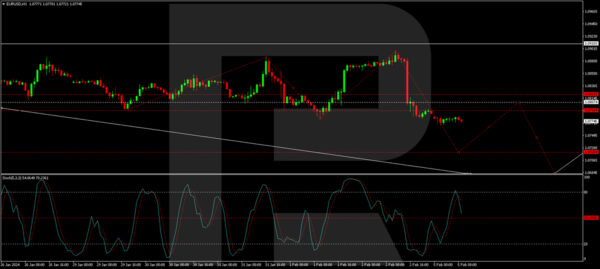The US dollar has seen a significant increase in strength against the Euro, with the EUR/USD pair falling to 1.0770 by Monday morning. This movement is largely attributed to the recent release of robust employment sector reports in the US for January, which have shifted investor expectations regarding the Federal Reserve’s interest rate decisions.
The Nonfarm Payrolls (NFP) report for January revealed an impressive increase of 353 thousand jobs, far exceeding the anticipated 187 thousand. Additionally, December’s NFP figures were revised upwards to 333 thousand. Average hourly earnings also saw a notable rise of 0.6% month-over-month, doubling the forecast. These indicators suggest mounting inflationary pressures, potentially complicating the Federal Reserve’s plans to normalize interest rates.
The latest employment data effectively solidified market projections, especially after Federal Reserve officials indicated that a rate cut in March was unlikely, with adjustments possibly being postponed until May.
EUR/USD Technical Analysis
The H4 chart analysis of EUR/USD indicates that a corrective wave reaching 1.0896 has concluded. The market is now in the midst of a downward trend aiming for 1.0722. Upon achieving this target, a potential corrective movement to 1.0808 might occur, serving as a test from below, before the trend resumes its descent towards 1.0682. This outlook is supported by the MACD indicator, which is positioned below zero and indicates a continued downward trajectory.
On the H1 chart, the EUR/USD pair has established a consolidation range around 1.0808. Following a downward breakout, the declining wave is expected to proceed towards 1.0722. After reaching this milestone, a correction back to 1.0808 could be anticipated. The Stochastic oscillator, with its signal line currently above 50, suggests a potential climb to 80 before a decline to 20, reinforcing the bearish scenario outlined.















